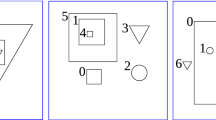Abstract
Considerable amounts of data are continuously generated by pathologists in the form of pathology reports. To date, there has been relatively little work exploring how to apply machine learning and data mining techniques to these data in order to extract novel clinical relationships. From a learning perspective, these pathology data possess a number of challenging properties, in particular, the temporal and hierarchical structure that is present within the data. In this paper, we propose a methodology based on inductive logic programming to extract novel associations from pathology excerpts. We discuss the challenges posed by analyzing these data and discuss how we address them. As a case study, we apply our methodology to Dutch pathology data for discovering possible causes of two rare diseases: cholangitis and breast angiosarcomas.
Access this chapter
Tax calculation will be finalised at checkout
Purchases are for personal use only
Preview
Unable to display preview. Download preview PDF.
Similar content being viewed by others
References
Bellazzi, R., Zupan, B.: Predictive data mining in clinical medicine: current issues and guidelines. International Journal of Medical Informatics 77(2), 81–97 (2008)
Bennett, C., Doub, T.: Data mining and electronic health records: Selecting optimal clinical treatments in practice. In: Proc. of DMIN 2010, pp. 313–318 (2010)
Casparie, M., Tiebosch, A., Burger, G., Blauwgeers, H., Van de Pol, A., van Krieken, J., Meijer, G.: Pathology databanking and biobanking in the netherlands, a central role for PALGA, the nationwide histopathology and cytopathology data network and archive. Analytical Cellular Pathology 29(1), 19–24 (2007)
Cios, K., Moore, W.: Uniqueness of medical data mining. Artificial Intelligence in Medicine 26(1), 1–24 (2002)
Cote, R., Robboy, S.: Progress in medical information management: Systematized nomenclature of medicine (SNOMED). JAMA 243(8), 756–762 (1980)
Fournier-Viger, P.: Spmf: A sequential pattern mining framework (2011), http://www.philippe-fournier-viger.com/spmf
Jensen, P., Jensen, L., Brunak, S.: Mining electronic health records: towards better research applications and clinical care. Nature Reviews Genetics 13(6), 395–405 (2012)
Lavrač, N., Dzeroski, S., Bratko, I.: Handling imperfect data in inductive logic programming. Advances in Inductive Logic Programming 32, 48–64 (1996)
Muggleton, S., De Raedt, L.: Inductive logic programming: Theory and methods. The Journal of Logic Programming 19, 629–679 (1994)
Ramakrishnan, N., Hanauer, D., Keller, B.: Mining electronic health records. Computer 43(10), 77–81 (2010)
Singh, A., Nadkarni, G., Guttag, J., Bottinger, E.: Leveraging hierarchy in medical codes for predictive modeling. In: Proc. of ACM Conference on Bioinformatics, Computational Biology, and Health Informatics, pp. 96–103. ACM (2014)
Srinivasan, A.: The Aleph manual. Machine Learning at the Computing Laboratory. Oxford University (2001)
Sun, J., Hu, J., Luo, D., Markatou, M., Wang, F., Edabollahi, S., Steinhubl, S., Daar, Z., Stewart, W.: Combining knowledge and data driven insights for identifying risk factors using electronic health records. In: Proc. of AMIA Annual Symposium., vol. 2012, p. 901. American Medical Informatics Association (2012)
Vavpetič, A., Lavrač, N.: Semantic subgroup discovery systems and workflows in the sdm-toolkit. The Computer Journal 56(3), 304–320 (2013)
Wang, F., Lee, N., Hu, J., Sun, J., Ebadollahi, S.: Towards heterogeneous temporal clinical event pattern discovery: a convolutional approach. In: Proc. of the 18th ACM SIGKDD, pp. 453–461. ACM (2012)
Žáková, M., Železný, F.: Exploiting term, predicate, and feature taxonomies in propositionalization and propositional rule learning. In: Kok, J.N., Koronacki, J., Lopez de Mantaras, R., Matwin, S., Mladenič, D., Skowron, A. (eds.) ECML 2007. LNCS (LNAI), vol. 4701, pp. 798–805. Springer, Heidelberg (2007)
Author information
Authors and Affiliations
Corresponding author
Editor information
Editors and Affiliations
Rights and permissions
Copyright information
© 2015 Springer International Publishing Switzerland
About this paper
Cite this paper
Op De Beéck, T. et al. (2015). Mining Hierarchical Pathology Data Using Inductive Logic Programming. In: Holmes, J., Bellazzi, R., Sacchi, L., Peek, N. (eds) Artificial Intelligence in Medicine. AIME 2015. Lecture Notes in Computer Science(), vol 9105. Springer, Cham. https://doi.org/10.1007/978-3-319-19551-3_9
Download citation
DOI: https://doi.org/10.1007/978-3-319-19551-3_9
Publisher Name: Springer, Cham
Print ISBN: 978-3-319-19550-6
Online ISBN: 978-3-319-19551-3
eBook Packages: Computer ScienceComputer Science (R0)




